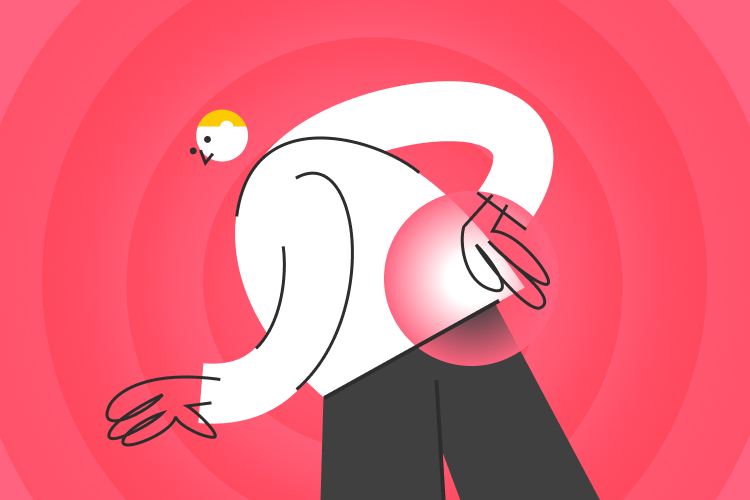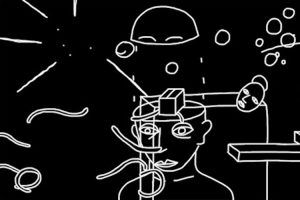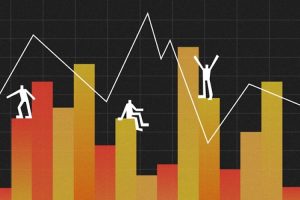Mind-Wandering
Neuroscientist Klaus Linkenkaer-Hansen on the biology of mind-wandering, training one's attention, and the rol...

Chronic pain is also called persistent pain by many scholars, and it is typically defined by two features: the person reports pain that’s regular and affects them on most days, and it lasts for at least six months. That is basically the definition, and it turns out that that definition is problematic in a lot of ways. It is probably based mostly on a model that is injury-based, so a person will experience an injury or maybe surgery, and their acute pain is expected, normal and immediate. This usually lasts for a few hours or days or even up to a few months. If the injury does not heal, such acute pain becomes long-lasting – for chronic pain, it reaches six months. It turns out that this model works for some types of chronic pain but doesn’t work as well for others, such as headaches, which are recurrent and don’t usually start with an injury, irritable bowel syndrome, abdominal pain, pelvic pain, or fibromyalgia. They do not usually start with a clear injury, do not have an early acute onset, and six months later are unresolved and therefore become chronic. But for many people, an injury, for example, which leads to acute pain, will never heal or, better yet, it heals physiologically in the tissues, but something about the neural mechanisms in the brain leads to it becoming chronic.
Pain is a subjective experience, and even though you can find neuropathological correlates of pain and some autonomic nervous system correlates of pain, it still is fundamentally defined as the subjective experience that people report in certain ways. They may show facial expressions, or behavior, or movements reflecting pain, but the field agrees that it’s fundamentally subjective; we have to rely on a person’s reports of their experience of pain.
For the person who is in pain, there are a number of features that are comorbid with a number of problems that accompany the pain. In particular, one major problem is behavioral dysfunction; people’s activities will become impaired in some way. Commonly pain leads to the inability to perform certain activities of daily living ranging from moving in a certain way, or bending, or lifting all the way to the extent of being disabled in bed, unable to ambulate, and unable to work. So that effect on physical functioning is profound and very common and that’s the thing that oftentimes leads people to seek treatment. Another consequence of pain is emotional or mood disturbances – depression is very common in people who have been dealing with chronic pain. Hopelessness, pessimism, lack of energy, sadness, and other symptoms of depression are very common in chronic pain. Also common are things like anxiety or fear, anger, and irritability. Those three big dimensions: pain—how severe or intense it is and how frequently you feel it—behavioral dysfunction or behavioral impairment and psychological impairment are the three big ones. Difficulties with coworkers or family members, or others are not uncommon as relationships are affected by pain. And then, finally, for some people, it would have an impact on their sense of identity, their sense of who they are, their self-worth, and their view of themselves, so that they see themselves as a patient with chronic pain rather than a fully functioning person.
Chronic pain is best thought of as multifactorial or multi-caused. There’s increasing evidence that there are some genetic loadings that predispose people to chronic pain problems, and it is probably better thought of as epigenetic, which is the genetic predisposition unlocked by environmental or learning experiences. In most people, we do not find pure genetic predispositions, but there is some evidence that genetic predispositions along with environmental factors – this could be an acute injury or psychological stressors – tend to lead to chronic pain, but that certainly doesn’t account for most cases of chronic pain in the world.
Another common cause is developmental factors. We know that people who have difficult childhoods, such as adverse life experiences, are more likely to develop chronic pain in adulthood. For example, a child who has multiple painful medical procedures or other multiple injuries that cause acute pain is more likely to develop chronic pain later on. Another factor is a disposition to worry about your pain or to catastrophize about it, to be anxious about it. A common model with a lot of empirical support is that an initial injury will not recover, and the reason it does not recover is that people start to worry about the meaning of the injury. It is almost as if the bodily danger signal has been activated. Acute pain can be best thought of as a danger signal that tells the human or the animal: “stop activity and rest,” but that danger signal remains activated in some subset of people who are afraid of their pain, afraid of movement, and continue to interpret that pain is dangerous to their tissues. And thus starts this cycle that feeds on itself. The thoughts about pain feedback on the pain, especially through central nervous system pathways, it maintains the pain or reactivates the pain.
However, many scholars believe that what a society makes out of illness, disease, or impairment will drive or direct people’s experience. There is some evidence that in some countries, whiplash rarely occurs because it is not on the radar – people rarely report it, whereas, in some other countries, it is very common. And then the second aspect of cultural factors is that countries vary in terms of how they encourage or discourage reporting pain and other complaints. That seems to vary by country, so the best way to think about chronic pain is that it is influenced by socioeconomic and cultural factors. Interactions between individual differences in anxiety and helplessness with pain or life stress and genetic dispositions are the big factors that drive the development and maintenance of chronic pain.
Thus far, pain psychologists and some other pain practitioners have thought of chronic pain as a monolithic entity because the issue of how one develops chronic pain is less relevant than how one can manage the pain. Many psychologists do not differentiate between pain caused by fibromyalgia and pain caused by rheumatoid arthritis; they are often treated in the same way by helping people to deal with their anxiety, managing their behavior better, and changing the way they think. However, my other colleagues and I think that it is probably better to differentiate among types of chronic pain because they have different implications for how you treat the person and how you think about pathology.
A second category is best thought of as nociceptive or structural pain. In these cases, the disease entity or peripheral structural damage creates signals of pain to the brain, and then the brain registers perceives, and modulates the pain. Certain autoimmune diseases like rheumatoid arthritis, lupus, multiple sclerosis, and inflammatory bowel diseases such as Crohn’s and ulcerative colitis. These cause changes in the bodily tissues that appear to generate pain. The same thing occurs in osteoarthritis with the degeneration of bone tissue and cancer, or cancer pain, where a tumor might be growing and impinging on tissues and causing pain.
The third category of pain is best thought of as centralized pain or central nervous system pain. Here, the brain and the spinal cord are the primary drivers of pain, and there is a composite of conditions that overlap with each other. They are sometimes called functional medical disorders or unexplained conditions. This would include fibromyalgia, which causes whole-body pain, fatigue, sleep problems, irritable bowel syndrome, pelvic pain, a temporomandibular joint disorder with jaw pain, and a wide range of musculoskeletal pains in the neck or back. These pains are marked less by any peripheral involvement but more by the central nervous system. The neural pathways in the brain that generate pain are strongly linked to the same pathways that are related to emotion.
There are conditions where an emotional disturbance is going on alongside the pain, which may be part of the pain process or may be driving the pain. For example, developmental problems which give rise to emotions like anger, sadness, or fear create changes in the nervous system which show up later in adulthood. These emotional experiences change the brain’s neural pathways that drive pain. Later on, in adulthood, people will commonly experience the onset or the exacerbation of these types of pain with stressful life experiences, like a difficult job, conflicted marriage, parent-child problems, etc. Those sorts of issues are a very common setting factor for these emotions, which then get generated, and a person is struggling with them, which seems to drive pain. These are the set of pain conditions that psychologists find most interesting because we can think about the etiology or the underlying causes of pain and maybe address those, in contrast to the previous two categories: structural and neuropathic pain. Psychological factors contribute less to those other two categories—it is more about the body. We have to approach these patients differ in terms of our psychological treatments than the category of centralized pain patients. The first task is to try to differentiate among these types of pain, and sometimes good medical evaluations help to reveal neuropathic pain or the diseases involved in nociceptive pain.
The large category of more centralized pain is harder to diagnose because you have to make a good psychosocial history, but some of the cues we use to diagnose centralized pain are that the person’s pain is not just localized and stable; it tends to move around their body. Patients have a lot of the ups and downs of their pain connected with their emotional state. They have a history of other pain conditions or centralized symptom conditions, which suggests that it’s more of a brain-based phenomenon than just a localized peripheral phenomenon. We also try to trigger emotional experiences in evaluation and see what happens to their pain. Sometimes patients will become stressed or anxious, and their pain exacerbates quite a bit. In other cases, we can get patients to do some emotional work that relieves them, so their pain will decrease substantially. Therefore, there is a clue that the pain is more being driven by the brain than by the periphery.
Classic in this category are techniques such as relaxation training to calm the body and the mind, reappraisal of negative thoughts and emotions so anxious catastrophizing can be reduced, and pacing their activities so they don’t overdo themselves behaviorally and flare up another pain episode. Patients are encouraged to engage in pleasant activities rather than lying around, moping, and being depressed, to enhance their capacity to engage in things that are positive and reinforcing. Some other things, such as improving their sleep and sleep hygiene, are other techniques. This set of techniques is really well-studied cognitive behavioral therapy, and there is some good evidence that it works, though the effects are not that powerful. But there is a subset of patients who get benefits from it and others who shift from feeling completely helpless to at least feel that there is something they can do about their pain, and that is an important shift towards being more effective.
In the last five or seven years, acceptance- and mindfulness-based approaches to pain have been gaining popularity. These are a little different from cognitive-behavioral techniques. The goal is not to control your pain or to manage your pain, but just to accept your experience and move on with engaging in life activities that are of value to you. This task gets a little more broad in terms of psychotherapeutics – it is to identify what is valuable for patients to help them both move towards doing those activities that are of value while simultaneously learning just to be in the present moment with their body and their minds, rather than worrying too much about the future or agonizing about their past—to become more accepting of their experience of pain, emotions, and so on. These approaches are commonly used today in many settings.
In my work and the work that some of my colleagues are doing, we advocate those approaches for neuropathic pain and disease or nociceptive-based pain. But for the centralized pain, where there is a stronger psychological and emotional component that might be driving it, we are advocating for an approach that helps people to resolve unresolved emotional issues and to overcome the fear of the pain in the most powerful way possible. We use an approach that helps people learn that their pain is basically based in their brain rather than in their body, and because it is in their brain, there is some learning that is involved, and unlearning can reverse the pain process.
We work hard to help these patients to learn to accept this model and that pain and their brain can be changed. And we help them start engaging in ways that will decrease their fear of their pain and increase their capacity to feel like they are in charge of their lives and their emotional issues. We do a lot of the emotional work as well, so if there are unresolved childhood events or trauma, we will try to resolve that by having them deal with those issues. If there are conflicted relationships or stressful experiences right now going on in their lives, and the person feels helpless or fearful about it, this will help them become empowered to face those things and to fix those issues in their lives. The larger goal is to shift a person from fearful of their pain and their body to feeling empowered and having the capacity to live life fully by overcoming the emotional scars that they have, the adverse childhood experiences, and the stressful conflicted relationships that they have. That is what I have been doing my research on, and we get some good outcomes of that approach with people with these sorts of centralized pain.
A better mechanism for tailoring the type of treatment to the type of pain the patient should be found. Right now, there is very little consensus in the field. Some people treat all pain patients in the same way, whereas others try to base their medical interventions—like pharmacological interventions—on certain variations of pain. Right now, we really do not have a good sense of what is going to benefit the patient and which approach, including medication, to use. In the United States, there is a major problem with opioid use being regularly prescribed for chronic pain, and a small subset of those patients who are prescribed opioids will become addicted to them and even transition to heroin use. It is only a small percentage, but we do not know who they are yet, and we need to figure those out. Similarly, in all the treatments that I provide for patients, only maybe a third to a half show a nice benefit, and we do not really know who they are yet. The physical, genetic, pain-related, or psychological factors that seem to predict who is going to respond best to which type of treatment approaches need to be figured out.
Another process that we are struggling with is identifying the actual mechanisms of change. Most psychological interventions are comprehensive and involve multiple techniques targeting multiple processes, and the patient will be engaged in lots of change going on at the same time. It is not known, yet which specific processes or mechanisms are changing and leading to the outcomes. If we do learn that, then we will have a better chance to make our treatments more effective by activating the specific mechanisms that are targeted, and we can get rid of inefficiencies. Identifying mechanisms of treatment approaches becomes the core principle of tailoring to individual differences in pain.
The larger question about the socioeconomic issues—about disability and returning to work and regaining functioning has to be tackled. This is a hot topic in the United States and in other places. What sort of systems should be involved to get people back to functioning while at the same time providing an economic support system for them? Unfortunately, those two factors often clash with having disability status and economic security, and we have to work out the best way to implement that.

Neuroscientist Klaus Linkenkaer-Hansen on the biology of mind-wandering, training one's attention, and the rol...

Neuropsychologist Chris Frith on the advantages of team work, various cognitive experiments, and the perspecti...

Neuroeconomist Sacha Bourgeois-Gironde on how our environment shapes the way we perceive money, the Ebbinghaus...